What are the Different Types of Laminate Flooring?
The world of laminate flooring is full of choices. Wood, stone and tile are some of the most popular uses for lamination. Any type of grain and color of wood or layout of stone or tile can be captured, laminated and split into easily-assembled planks from which you can create a floor. The sky is the limit, sometimes making it difficult for consumers to settle on one choice. An easy way to approach laminates is to break it down into the types of laminate available, and go from there.
So, What Are The Different Types of Laminate Flooring?
Installation Types
One way you can divide laminate into different categories, is by installation type. This is especially important to consider if you’re installing the laminate flooring yourself, so be sure to pick a floor with the kind of installation method you’d prefer to use. The different installation types for laminate flooring are:
- Glueless-Click. Over two-thirds of today’s laminates fall under this easy-to-install, glueless click-lock category.
-
Note: some laminate floors come with a pre-attached underpad, making installation even quicker and easier. Laminate floors without a pre-attached underpad often require that an underpad be laid down prior to installation of the laminate floor to provide a level of cushion and sound absorption. Additionally, if the laminate floor is being installed on or below grade, or in an area subject to moisture, a separate thin plastic underlayment will need to be laid down prior to installation of the laminate floor to provide a moisture barrier (aka vapor barrier). This needs to be done whether the laminate floor has a pre-attached underpad or not.
-
- Glued Laminate. You’ll need to glue the joints together. While this makes for a very strong floor once installed, installation cost and time is higher than with a glueless-click.
- Pre-Glued. Here, the joints have a glue already applied to them, but may need to be moistened to activate the glue before you join them together.
Surface Types
You may want to pick your floor simply based on what the surface will look like. As we’ve said before, laminates are always evolving. Where there once was one basic surface to choose from, now there are many.
- Smooth. A plain finish just like a layer of varnish you’d associate with hardwood. Sometimes you can choose between high, medium and low gloss finishes.
- Embossed and/or Textured. Some laminates come with a textured finish. Regular embossing isn’t an exact match up with the grooves of the printed grain but does fool the eye into seeing a surface grain.
-
Distressed/Hand scraped. Hand scraped laminate flooring is now available—a process that up until recently was reserved only for engineered or solid hardwood floors. This process adds an antiqued look to your laminate floor.
- Embossed in Registration. This type of embossing matches the grain of the wood exactly for the most authentic embossed look.
- Keep an eye out for new laminate innovations, they’re happening all the time.
AC Rating
For those who look for durability as a way to decide on a laminate product, the AC rating is an ideal guide. Use it to check your expected usage, or foot traffic, against what the floor was built to withstand. AC stands for Abrasion Class and an impartial 3rd party has set the standard for 5 different categories of use and durability.
AC1 Moderate Residential. Built to withstand only light residential use. Suitable for closets or bedrooms.
AC2 General Residential. Built for moderate foot traffic. Suitable in residential spaces that don’t see a tremendous amount of wear and tear like dining rooms or living rooms.
AC3 Heavy Residential/Moderate Commercial. Built for all kinds of residential use including high–traffic rooms and even commercial spaces that have light traffic like offices without off-street traffic and hotel rooms.
AC4 General Commercial. Built to withstand every kind of residential use as well as more heavily trafficked commercial spaces that have off-street traffic like offices, cafes, and boutiques.
AC5 Heavy Commercial. Built for the busiest commercial uses and high–traffic spaces like department stores and government buildings.
As a general rule of thumb, the higher the AC Rating, the higher the price.

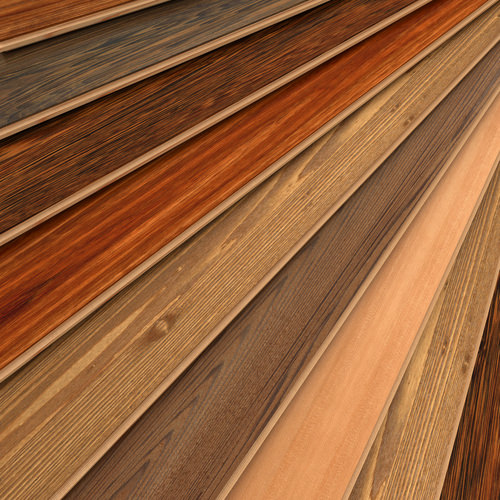
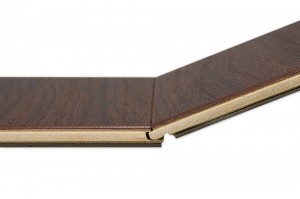
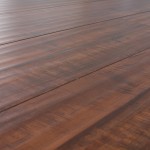
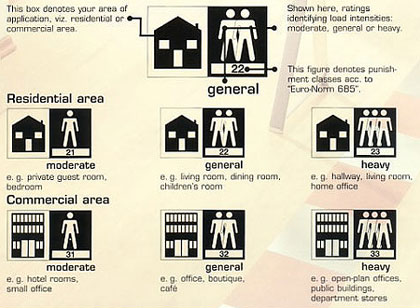

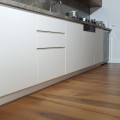


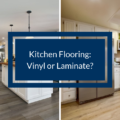
Gail Peterson
We are thinking about a laminate floor for our beach house in NJ. We now have an old cong oleum product there now. Can we put the floor on top of existing vinyl or does it need to be removed? Do we put a barrier under it?
Scott
Hi all…I’m looking for some Pergo Select in James River Pecan
Any help would be much appreciated!!!
Thanks =)
jay walk
Cheryl April 12, 2012 at 8:32 pm — it appears that cheryl’s questions never got answered … those are the same questions that i have —-
another comment — is that your video did NOT have CLOSED CAPTIONING — so i’m still clueless as to what other questions to ask or what to know.
we currently have laminate flooring … but apparently we did “whatever” wrong & now have to replace the entire house (the manufacture stated that since we did not “lay the flooring properly” that the warranty is null & void — that is a very costly “ouch” in the pocket book since i am on a disability income only)
Andrew
Looking to purchase an AC3 Pergo laminate, with attached foam, beveled type. The family room is heavily used by foot traffic due to wood burning stove and dogs. Will piss get into the laminate, if the dog would piss on it in the am until we come home in the evening?
Christine
Looking for Pergo Select James River Pecan (PS 50374). Anyone? Anyone? 🙂 Thanks!
Elaine
I just had laminate flooring installed 6 mos. ago. I have had nothing but problems. First, I noticed gouges. Next, I noticed scratches. Now, my dog vomited and the finish has come off. The floors look terrible also because there are streaks. I bought a Shark steam cleaner and was told not to use it. I was told to use damp mopping. Doesn’t clean and again streaks. Bought special cleaner for laminates. Shines but still has streaks. Anyone have suggestions or help?
Pingback: Laminate Flooring choices can be amazing... | Ken Bryant, CMT Realty - Serving Greater DFW
Cheryl
Hello.. I am planning to order laminate floors from your website.. I am a newest rookie about buying and installing.. I have few questions.
1) what kind of underlay is the right one for the cement ? I removed the carpet/pads and adhesives(glue) on the cement .. Cork? Plastic? foam?
2) is 8mm good for the “game room” ?
3) I do not want to buy an electric special saw to cut the floors just because it is only one time to use.. Is there a way to get a different kind of saw I could use?
4) Which one is the right one for molding sitting between the carpet and laminate floor? (doorway)
I think that’s all for now!
Thank you for your time…
Barry
I’m going to install flooring in my basement and plan to use “tyroc” which is a relatively new,rubber based product used for sub-flooring. My finished floor will be a laminate, and I need to know if an under-pad is required.
The tyroc mfg. says it’s not required, but to follow the directions of the laminate mfg.
Thanks
Barry
Clare hamlet
I meant to say, the MSDS….Clare
Clare hamlet
What laminate product for a living room – dining room has the highest rating on the MSTD scale? Also, what is the best scratch proof. I am looking at Prego, Bruce and Step Quick.
Thanks, Clare
Rodney Noriega
HI Clare,
Thank you for your inquiry.
Our laminate flooring actually complies with E1 for safety and formaldehyde release emmissions. E1 is the European standard for safe levels of emmissions/chemicals which are stricter than those found in North America.
With regards to durability dor a living room, you want to assess the AC ratings. AC rating is the measure of how durable a laminate floor is in relation to where it is more suitable to be installed. The AC rating should always be considered when buying laminate flooring.
AC 1- Suitable for infrequent traffic such as bedrooms
AC 2- Suitable for specialized areas of the house not noted for high traffic, such as living rooms (applicable in your case)
AC3- Heavy residential use and light commercial use
AC4- Wider range of commercial use
AC5/6 etc. – Extremely high commercial use
In your case, look for something with at least an AC2 rating. Of course the higher it is, the more durable.
Rodney
Cindy
I am in the process of investigating laminate flooring for our basement area. I have seen the regular finish, highly polished finish and the textured finish. I originally liked the regular finish but when I saw the textured finish I was drawn to it because of the durability for kids/teens/traffic, less likely to slip on (socks), moving furniture scratches less likely to be noticeable, etc. My question is: My main focus now is how easy is textured finish compared to regular finish for cleaning? I’m now concerned that the grooves will hold dust or grit or food if not wiped down more regularly than regular finish. I’m not afraid of cleaning regularly, just not daily! I look forward to hearing your advise 🙂
Julian Marcuzzi
Hi Cindy,
Thank you for the inquiry.
A floor that has a textured surface will hold dust/grit/food more then a material that has a polished or regular finish.
In saying this, the upkeep of a textured material will need supplementary cleaning when compared to a floor with a different finish. However, I still would not consider this flooring “high maintenance”.
The amount of cleaning that needs to be done on your floor will be absolutely dependent on the usage of the material. If there is a lot of foot traffic and things from outside are being tracked in, you will have to clean the flooring frequently. If shoes are taken off prior to entering the house, you will not need to clean the flooring as often. This is the rule of thumb for all types of finishes and not just a textured surface.
Hope this information was useful.
Thanks,
Julian
jessie neely
was looking for some lamanate flooring with the lock together no glue.also could you please tell me the differance between the 6 thru 12 mm flooring. is the 12 bigger or wider than the 6 or the other way around. thanks, jessie
Gary Sandur
Hi Jessie,
There are couple things that are diffence in the 12 mm and 6mm floors. You want to look at the AC rating (duribility rating) for the floors. Some 6mm will be AC3 and some will be AC3, where as 12mm floors are typically AC3 rated. The only other difference is sound transference, the 12mm floor will dampen sound more than the 6mm stickly be cause of thickness.
Kathie
Hi – anyone have Pergo Select James River Pecan? It is dicontinued and I cant find it anywhere. We need 300 sq feet. Thanks so much!
Mary G.
I have been looking at flooring and I do NOT like the flooring where there is a ‘groove’ where cut between the boards. I like the ones where it is smooth but slightly indented between the boards. What is the description for that kind of connection between the boards? Is that what beveled means? If not, how do I know that this is the way the boards go together with only one sample?
Thanks for your help with educating me.
tom gaines
I want to buy a wood laminate floor that has a real not a photo surface.
Gary Sandur
Hi there,
The type of floor you would want to look at is engineered hardwood flooring. There is no product out there that is a laminate with real wood on top.
tom gaines
Do you have a laminate floor that has a real wood veneer on top layer.? Tom
tom gaines
I am looking for a laminate floor that has a real wood veneer not a photo surface. Gom
tom gaines
Do you have a laminate floor with real wood veneer as the top layer? Thanks, Tom Gaines
Rachel
Is a laminated floor going to be durable for a motorised wheel chair going over it?
Lynn
I am looking for a wide width lamiante floor. Can you tell me about widths?
diane
The new flooring in my apartment has ridges that are making it hard to clean with a vacuum, or broom.
Winter gravel is catching in the ridges along with any spills, or breakage. I am a senior and it is hard on feet and legs to have ridges. Cleaning takes more than a normal effort and I am feeling it.
I suggest strongly that seniors do NOT get flooring with ridges, or texture. The smooth flooring is ideal and is just as nice looking. I grew up wth real hard wood floors and there were no ridges like this.
The look is the same when smooth and durability a lot better since scratches from sand, broken glass, or any gritty material are easier to deal with. Even picking up a needle, or pin, is difficult as they hide in the crevices.
I need a new cleaning system for this and Swiffer- type cleaning is costly and environmentally unfriendly.
I have suggested to the Board that in our senior apartments…smooth is superior.
I know wax is not good, or necessary, so warm water and ? …. soap will hide in the crevices too.
Since this floor is glued on a steam mop won’t work well either. My new stick vacuum is not helping much.
When people move out, they are putting this kind of flooring in and taking out the rugs which are dusty and hold bacteria. I will be getting a small non-slip rug for the entrance.
Soooo, please can you offer ideas for cleaning ridged laminate flooring? My back will thank you, and so will I.
D. Trollope
James Komenda
Diane,
Thanks for getting in touch. From what I am reading it would appear the flooring you have has pronounced bevelled edges, in which case it will collect more dust, dirt etc.
The best method of maintence for this type of flooring would be diligent sweeping to remove the dust / dirt etc. In terms of cleaning the product you want to use a lightly damp cloth / mop using only Water to clean the product. Cleaning solutions often have harsh chemicals which can negatively affect the appearance of the flooring.
Shagufta
Hi
What is the best type of laminate to buy? Some quote 7mm or 6mm. Is getting the thicker one the betterand is that the thickness of the actual laminate? I am confused and have looked at engineered wood aswell, because my understanding of laminate was that an actual thin layer of wood is applied on top. However I’m not sure I like the idea that it’s just a photocopy of a wood effect on paper.
James Komenda
Thanks for getting in touch.
When it comes to gauging the quality of a laminate floor, you want to first look at the AC rating of the flooring. Laminate floors will come with an AC Rating of anywhere from 1 -5. AC – 3 is set for residential settings with high foot volume traffic, AC -4 for light commercial, and AC – 5 more for heavy commercial applications.
The thickness of a plank does not necessarily relate to is durabilty. For example, you can have an 8mm AC -5 and a 12mm AC – 1. However, one of the benefits of going with a thicker laminate is the amount of sound transference that will go through the plank. The thicker the laminate, the more HDF (High Density Fibre) core it has, the less the sound transference through the plank.
Please note that lamiante is not an engineered hardwood. It is a synthetic product meant to duplicate the appearance of a natural product. Engineered Hardwood has a top wear layer or veneer of natural product.
H. Emmons
Dear Sirs,
My laminate floor was in stalled prior to the development of “waxed edges”for water proofing. The edges are beveled. What can I do to help waterproof these edges and the groove between each plank? Is there a way to suitably wax the exposed edges now. Or is there something else to do to make these exposed areas waterproof?
Thanking you for your help and kind consideration,
Sincerely,
Helen Emmons
‘
Rob Jones
Hi Helen
To simply answer your question no, there really isn’t anything or type of wax that you can add that’s going to make a difference. You want to stay away from adding any kind of wax to your floor as this may damage the floor rather then protect it. I would say the best way to address your concern would be to add area rugs and door mats in high moisture areas and this will help minimize any water damage that may occur.
I hope this answers your question.
CLAUDIA FARRIS
do you need the underlayment if the floor is above grade?
Rob Jones
Underlayment is a good idea no matter where you’re laying down your laminate floor. It does more than protect your flooring from moisture. Underlayment also reduces the sound of footfalls, which can occur in the minute space between your floor and your subfloor. Also, underlay can help to even out the installation, where slight level variance is common.
If you’re looking to save a bit of time, there are types of laminate floors that come with an underlay layer attached.
Thanks for your question!